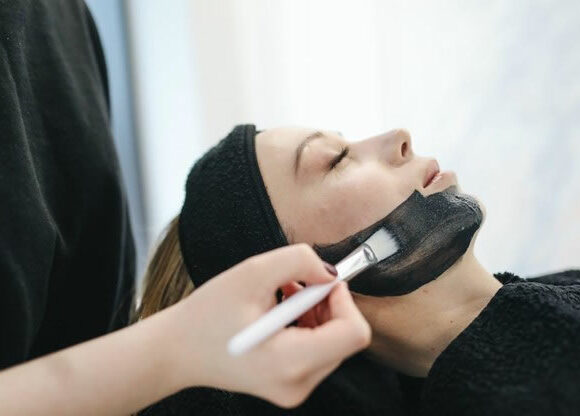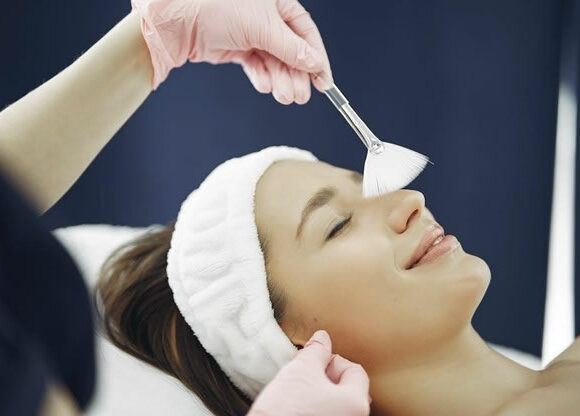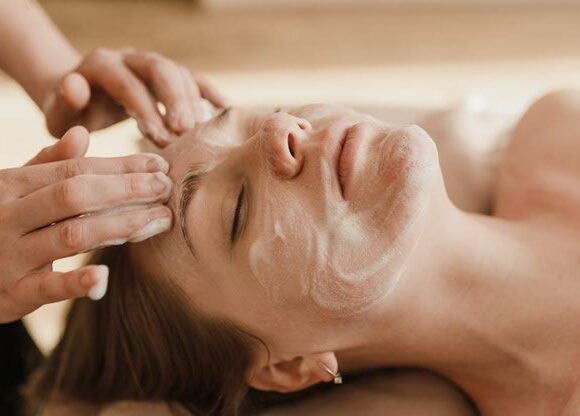Table Of Contents
- The Best Skin Care Routine For Fungal Acne
- 1. Cleanse With A Gentle Antifungal Cleanser
- 2. Use A Salicylic Acid Exfoliant
- 3. Apply A Soothing And Antifungal Toner
- 4. Increase Hydration
- 5. Use A Lightweight, Oil-Free Moisturizer
- 6. Incorporate Antifungal Treatments
- 7. Protect Your Skin With A Broad-Spectrum Sunscreen
- 8. Take Care Of Your Overall Health
- 9. Practice Good Hygiene Habits
- Conclusion
Fungal acne, also known as pityrosporum folliculitis, is a common skin condition caused by an overgrowth of yeast on the skin. Unlike traditional acne (acne vulgaris), fungal acne appears as small, itchy, inflamed bumps that can be difficult to treat. [1]
However, you can effectively manage and achieve clear skin with the proper skincare routine. This article will guide you through the ultimate skincare routine for fungal acne.
Before we dive into the fungal acne skincare routine, it’s essential to understand the nature of this type of acne. Fungal acne is caused by an overgrowth of the yeast called Malassezia, which is naturally present on our skin.
Factors such as a compromised skin barrier, excessive sebum production, and humid environments can trigger overgrowth within the hair follicles, leading to fungal acne.
If you are searching for fungal acne-safe products, read our article on 7 Fungal Acne-Safe Makeup Products to Achieve Smoother Skin.

The Best Skin Care Routine For Fungal Acne
Here are nine easy-to-follow steps to creating a fungal acne skincare routine that will help you achieve clear skin:
1. Cleanse With A Gentle Antifungal Cleanser
The first step in your skincare routine should involve cleansing your face with a gentle antifungal cleanser. This is important because fungal acne is caused by the overgrowth of fungi on the skin.
Look for gentle cleansers that contain antifungal ingredients like ketoconazole or pyrithione zinc, as these have been proven to combat fungal infections effectively. Try Dr. Eddie’s Happy Cappy (Pyrithione Zinc at 0.95%), regarded as one of the gentlest and best antifungal face wash for both the face and the body.
When using this product as an antifungal face wash, ensure your face is damp, and gently massage the product onto your skin, paying close attention to the affected areas.
After massaging, rinse your face thoroughly with lukewarm water to remove residual cleanser.
ProTip:
Although antifungal face washes can be effective, they can be too harsh on the skin when used daily or overused. That’s why it’s important to have a gentle yet effective non-medicated cleanser in your arsenal, such as Malezia’s Hydrating Hyaluronic Acid (HA) Cleanser, Almond Clear’s – Mandelic Acid Face and Antifungal Body Wash, or Geek and Gorgeous 101 Jelly Joker. These products are fungal acne safe, non-irritating, and non-stripping, which makes them perfect for thoroughly cleaning your skin without worrying about triggering or exacerbating fungal acne.
2. Use A Salicylic Acid Exfoliant
Salicylic acid, a beta-hydroxy acid (BHA), is a powerful ingredient for treating fungal acne symptoms. It has exfoliating properties that help remove dead skin cells, unclog pores, and reduce inflammation.
Using a salicylic acid exfoliant can prevent the buildup of sebum and fungi on your skin. Apply a thin layer of the exfoliant to your clean and dry face, allowing it to sit for 20-30 minutes before rinsing it off. This will give the acid enough time to penetrate your skin and work its magic.
Consider using Porefectly Clear Clarifying Toner for your face(Mild) or Fix It 2% Pore Perfecting Solution(Potent). These products are suitable for all skin types and contain 2% BHA.

3. Apply A Soothing And Antifungal Toner
After exfoliating, using a toner containing soothing ingredients is essential. Look for toners that include green tea extract, chamomile, panthenol, witch hazel, or aloe vera, as these ingredients are known for their calming properties.
They not only help reduce inflammation but also provide additional antifungal benefits. To apply the toner, pour a small amount onto a cotton pad and gently swipe it across your face, paying extra attention to the areas affected by fungal acne.
This will help ensure the toner is evenly distributed and effectively treat the affected areas.
Consider trying any one or all of the following:
- 1. Klorane 3-in-1 Micellar Water+Toner | Best
- 2. Anua Heartleaf 77% Soothing Toner | Better
- 3. Nard’s Low pH Calming Toner with Tea Tree | Good
4. Increase Hydration
Achieving healthy, nourished, and balanced skin requires prioritizing hydrating products. For those dealing with fungal acne, the Daily Mineral Spray for Thirsty Skin is a must-have addition to their skincare routine.
This spray provides the ultimate hydration and nourishment for skin, making it less susceptible to dehydration and acne.
It effectively replenishes lost moisture and soothes dry, dehydrated skin, giving a lush and plump appearance. The Daily Mineral Spray is an exceptional choice for anyone looking to achieve radiant, clear, and healthy skin.
Also worth mentioning:
- Stress Less Hydrating & Repairing Serum – For those with sensitive and dehydrated skin, this product offers deep and thorough hydration while helping repair the skin.
5. Use A Lightweight, Oil-Free Moisturizer
Moisturizing your skin is crucial, especially if you have fungal acne. However, choosing a lightweight, oil-free moisturizer is essential to avoid clogging your pores or making your condition worse.
Look for moisturizers that contain ingredients like urea, mandelic acid, bakuchiol, azelaic acid, hyaluronic acid, and ceramides, as these can effectively hydrate and strengthen your skin’s barrier.
After cleansing and toning, apply the moisturizer evenly across your face, avoiding the delicate eye area. This will help maintain the moisture balance in your skin and prevent excessive dryness or oiliness.
One of the best oil-free moisturizers for fungal acne is the 5% Urea Moisturizer by Malezia.
If you want to know more about fungal acne-safe moisturizers, read our article on The Best Moisturizers for Fungal Acne: Keeping Your Skin Happy and Healthy.
6. Incorporate Antifungal Treatments
To specifically target the fungal overgrowth on your skin, it’s essential to incorporate antifungal treatments into your skincare routine.
Various options, such as antifungal creams, serums, or spot treatments containing ingredients like tea tree oil or sulfur, are available. These ingredients have antimicrobial properties and can effectively combat fungal infections.
Consult your dermatologist to determine the most suitable antifungal treatment for your condition. Once you have the recommended treatment, apply it directly to the affected areas as directed. This will help eliminate the fungi and promote the healing process.
One of the best standard over-the-counter treatment options for fungal acne that you can try is Nizoral AD.
7. Protect Your Skin With A Broad-Spectrum Sunscreen
Sun protection is crucial when dealing with fungal acne. Exposure to the sun’s harmful UV rays can worsen inflammation and potentially damage your skin.
Therefore, choosing a broad-spectrum sunscreen with an SPF of 30 or higher to shield your skin from UV radiation is essential. Opt for non-comedogenic formulations to prevent pore clogging, which can exacerbate acne.
Before going outside, apply the sunscreen generously to all exposed areas of your skin, including your face, neck, and any other areas prone to acne breakouts.
Dermatologists recommend TiZO3 Facial Sunscreen as a top choice for those seeking fungal acne safe sunscreens.
It’s dependable and highly effective for all skin types and especially useful for individuals dealing with fungal acne.
Remember to reapply the sunscreen every two hours or as needed, especially if you’re sweating or spending extended periods outdoors.

8. Take Care Of Your Overall Health
Maintaining a proper skincare routine is essential for managing fungal acne, but taking care of your overall health is equally important. Your skin reflects your internal well-being, so adopting healthy lifestyle habits can contribute to clearer skin.
Start by maintaining a balanced diet of fruits, vegetables, and lean proteins. These foods provide essential nutrients and antioxidants that promote skin health.
Additionally, staying hydrated by drinking an adequate amount of water daily helps flush out toxins and keeps your skin hydrated from within. Avoid excessive stress, as it can worsen inflammation and trigger acne breakouts.
Practice stress-management techniques like yoga, meditation, or deep breathing exercises to control stress levels.
Did you know that taking oral probiotics can improve not only your gut health but also the appearance of your skin? For these reasons, You may want to consider trying Florastor Daily Probiotic for women and men.
9. Practice Good Hygiene Habits
Good hygiene habits are vital in managing fungal acne and preventing its recurrence. It’s important to avoid using occlusive or heavy makeup products that can trap moisture and promote fungal growth. Opt for non-comedogenic and oil-free cosmetics that are less likely to clog your pores.
Additionally, wash your pillowcases and towels regularly to prevent the accumulation of fungi. Fungi thrive in warm and moist environments, so keeping your linens clean and dry is essential.
Lastly, be cautious when using shared items like makeup brushes or razors to avoid cross-contamination. Regularly clean and disinfect these items to prevent the spread of fungi and bacteria.
Read our article on Fungal Acne Vs. Bacterial Acne: Are They The Same?

Conclusion
Clear skin with fungal acne requires a consistent and targeted skincare routine. Following the above steps, you can effectively treat fungal acne and improve your skin’s health and appearance.
Remember to be patient, as treating fungal acne can take time. If your condition persists or worsens, consult a dermatologist for further guidance and treatment options. You can achieve the clear, healthy skin you desire with the right approach, even if you have sensitive skin.
In conclusion, fungal acne breakouts can be a challenging condition to manage, but with a comprehensive fungal acne skincare routine, it is possible to achieve precise and healthy skin.
By following the steps provided in this article, including using antifungal cleansers, exfoliants, toners, and moisturizers, incorporating antifungal treatments, practicing sun protection, taking care of your overall health, and maintaining good hygiene habits, you can effectively combat fungal acne and prevent future breakouts.
Remember to consult a dermatologist for personalized advice and treatment options. Stay consistent, patient, and proactive in your skincare routine, and you will be on your way to achieving clear skin and renewed confidence.
Want to know about antifungal creams for the best fungal acne treatments? Read our article on The Best Antifungal Cream for the Face.
- Rubenstein RM, Malerich SA. Malassezia (pityrosporum) folliculitis. J Clin Aesthet Dermatol. 2014 Mar;7(3):37-41. PMID: 24688625; PMCID: PMC3970831.
More Content
- Retinol and its Effectiveness in Treating Fungal Acne
- The Power of Sulfur for Fungal Acne
- How To Tell If Acne Is Hormonal Or Bacterial
- The Best Fungal Acne Safe Foundation For Your Skin
- Malezia Skincare: A Game-changer for Fungal Acne
- Fungal Acne Cleansers – An Updated List
- The Best Face Wash For Hormonal Acne
- Sebaceous Hyperplasia treatment at home
- The Best Moisturizers for Fungal Acne
- Anti-fungal Creams for Face
- Fungal Acne Safe Products You Can Add To Your Skin Routine
- The Latest Sunscreens for Fungal Acne
- Fungal Acne-Safe Makeup Products to Achieve Smoother Skin
- Almond Clear – Mandelic Acid for Acne and Fungal Acne Prone Skin
- Fungal Acne vs Closed Comedones: What’s The Difference?
- How To Treat Fungal Acne On The Face Naturally
- Makeup Products to Achieve Smoother Skin
- What Is Fungal Acne?
